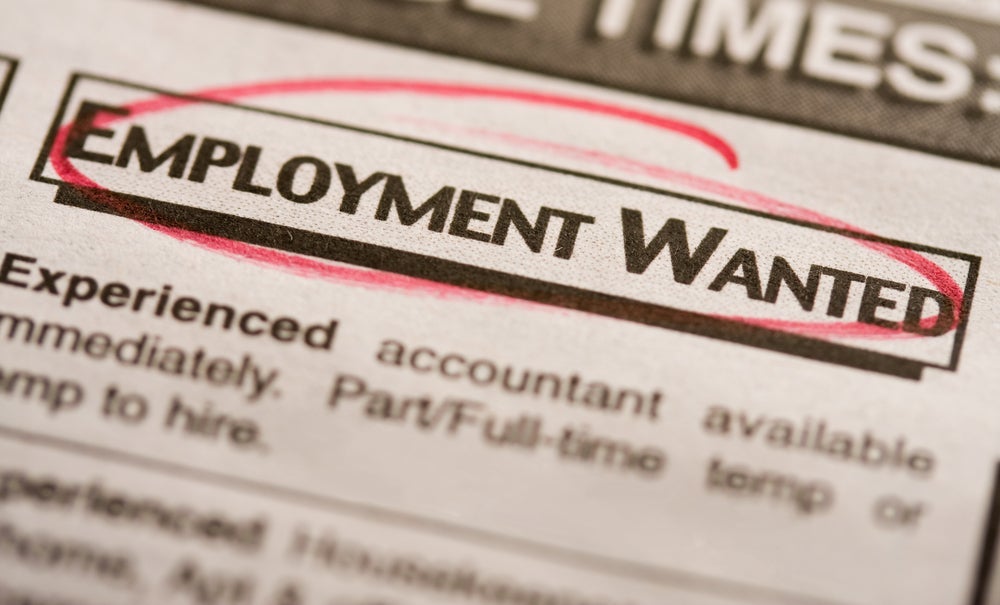
According to the International Labour Organization (ILO) definition, an unemployed person is a person aged 15 or over:
- without a job during a given week;
- available to start a job within the next two weeks;
- actively having sought employment at some time during the past four weeks or having already found a job that starts within the next three months.
The unemployment rate is more simply the number of people unemployed divided by the labour force (multiplied by 100).

Access deeper industry intelligence
Experience unmatched clarity with a single platform that combines unique data, AI, and human expertise.
In general, low unemployment is associated with a growing economy. People are in employment, producing goods and services that consumers are purchasing. Those employed are earning income and spending in the economy. They are also paying taxes to fund government expenditure.
However, there are some instances when low unemployment can be bad.
How a low unemployment rate can be bad for companies
Higher unemployment rates can mean talent is readily available, especially if there is a high level of skilled/tertiary unemployment. If the unemployment rate is low, it means recruitment of suitable staff is more difficult. A smaller applicant pool may mean companies are unable to find a suitable candidate or employ someone without the required skill set, leading to inefficiencies. Employees can also have more bargaining power, potentially driving up salary demands and impacting a company’s profitability.
Low unemployment is linked to higher levels of inflation
If more people are in employment, it means there is more money circulating throughout the economy. This can lead to rising price levels as demand for goods and services begins to outstrip that of supply.

US Tariffs are shifting - will you react or anticipate?
Don’t let policy changes catch you off guard. Stay proactive with real-time data and expert analysis.
By GlobalDataThe UK has seen price levels rise by 10.1% in September 2022 (when compared with September 2021). At the same time, its unemployment rate has fallen to 3.5% (as of July 2022). The chart below shows the inverse relationship between UK unemployment and inflation. As the unemployment rate falls, inflation rises.
In the case of the UK, the inflationary pressures are more generally a supply-side issue. The war in Ukraine has reduced the supply of foods and fuel from Ukraine and Russia, while demand has stayed pretty much the same. This has driven up price levels to unprecedented levels.
A low unemployment rate could also lead to a positive output gap
A positive output gap is where actual GDP is more than potential GDP. The potential output is the maximum production of goods and services that a country can produce when it is most efficient. Therefore, it infers that if a country’s actual output is above this then it must be producing the additional output in a more inefficient manner.
Underemployment is a prime example of this. Say there is a trained lawyer who is finding it difficult to get employed in their legal profession. In lieu of being unemployed, the lawyer-to-be takes up a retail job. This person is not unemployed. They are underemployed as their skill set is above that of their existing job. However, they will contribute to the increase in the production of the retail sector. Overall, however, the economy is operating at a lower efficiency level. Many other scenarios can arise where the skill set of a country’s workforce (the supply of labour) does not match the demand from companies.
Zero per cent unemployment is neither sought nor practical
One may argue low unemployment is better than high unemployment. If so, then perhaps the most desirable outcome would be no unemployment at all, or a 0% unemployment rate. This is not sought by governments. First, it would be an almost impossible situation. It would require no movement in job seeking. Employees would need to remain in their existing jobs, with no workforce leavers or entrants. It would also constrain company growth. Governments will therefore speak more about full employment. Although there is no exact target for unemployment, most economists argue a rate between 3% and 5% is acceptable. However, it does depend on the country.
What level of unemployment is best for FDI?
In terms of foreign direct investment (FDI), investors seek locations that have high quality and available talent. In this case, sometimes locations with higher unemployment rates can be more desirable – assuming the unemployed have the skill set to be employable by that company. Also wage levels are less likely to be bargained upwards, keeping costs down for the company. However, if there is a high level of unskilled unemployed then it is not as attractive to the investors. It may also be more indicative of a flailing economy.
A low level of unemployment makes it more difficult to find the right workforce – a key bugbear for investors.
Investors are less likely to focus on the actual rate of unemployment itself, more so the impact it is having on the country’s workforce and economic growth. To that extent, companies should ensure a potential investment location is operating close to its full employment level. That would mean it has an unemployment rate in the range of 3–5% for more developed economies. However, size, geographic location, peer country rates and economic performance are also key considerations to provide a more holistic assessment of the country’s workforce capabilities.







